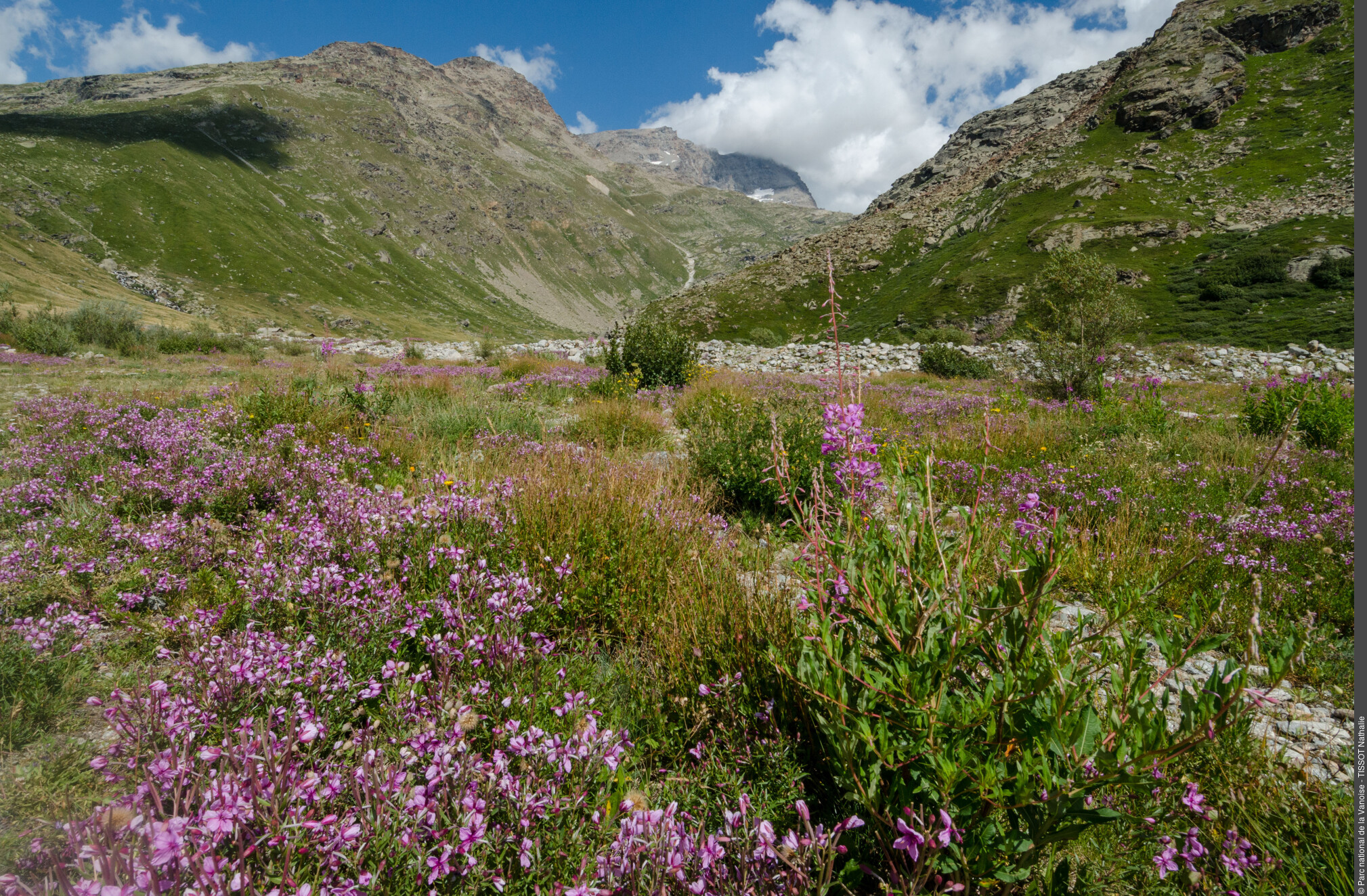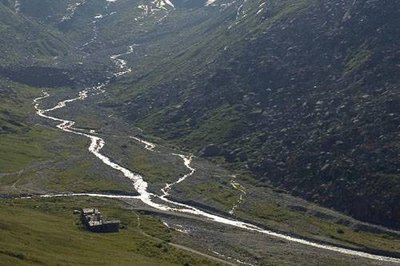
Walk to La Duis
Walking back up along the course of the Arc, the Arc’s plain opens up. The ridges of the Mulinet stand vigil while the glaciers illuminate the warmth of July. The flowers blossom, the colours explode and the birds sing. Further on, the people of the land have begun harvesting the hay. Nature is not the only thing you will see; this landscape, these old barns and old chalets originated from the toil and sweat of men.
Description
From the hamlet of Écot, take the pastoral track that continues towards the bottom of the valley, passing between the water intake and the EDF station. Approximately 1 km away, leave the trail that follows the Arc and on the left hand side follow the track alongside the large cairn that first rises gently on the slope before going along the Arc again to the Duis. Follow the opposite way to return.
- Departure : Écot car park, Bonneval-sur-Arc
- Arrival : Écot car park, Bonneval-sur-Arc
- Towns crossed : BONNEVAL-SUR-ARC
Forecast
Altimetric profile
Recommandations
Make sure you respect the rules of the car park. Don’t walk in the meadows while they are not mowed.
Information desks
La Ciamarella, 73480 Bonneval-sur-Arc
Vanoise Information Desk - Termignon
Place Vanoise, 73500 Termignon
Transport
Access and parking
From the Tourist Information Centre in Bonneval-sur-Arc, take the small road leading to Écot.
Parking :
Accessibility
No
- Emergency number :
- 114
More information
6 points of interest

Vue sur le hameau de l'Ecot (1930) - Editions GEP Lyon  Viewpoint
ViewpointView over the Hamlet of Ecot
The abandonment of agropastoral activity also affects the habitat. Whether conserved or not by the original families, this built heritage is subject to regulatory measures aimed at preserving its original appearance, in the absence of any occupant to fulfil the role. These measures do not prevent the disappearance of suspended drying balconies for solarium terraced balconies, and the appearance of bays, shutters or double roofs to meet modern standards of comfort.

Vue sur le hameau de l'Écot, Bonneval sur Arc. - PNV - BUCZEK Jessica  Architecture
ArchitectureThe hamlet of l'Écot
Wood became a rare commodity in Bonneval-sur-Arc, and so the builders of yesterday used the most abundant resource in this high valley - the stone. Walls, lintels, roofing, drinking troughs and even intermediate floors were mounted in lauze! Thanks to a wise restoration, the hamlet of l´Écot blends harmoniously into this landscape. Walk through the narrow streets and imagine how life once was when the hamlet was populated all year by men and their animals...
Une prairie de fauche fleurie pour le début de l'été. - PNV - DEFFRENNES Benoît  Flora
FloraThe flower meadows
These hay meadows are vital for farmers, allowing them to provide for their animals during the winter. The mowing promotes biodiversity and makes these meadows colourful in July. How many different species can you identify?
Grange en ruine, à demi enterrée dans la pente, adossée à un bloc rocheux. Bonneval sur Arc. - PNV - FOLLIET Patrick  History
HistoryThe hay barns
Barns can be spotted along the entire route up to Duis, which were previously used to store hay. Their architecture is particular to the Haute-Maurienne: the locals used the materials most available locally such as stone. This explains the dry stone walls as well as the lauze roofs. Large openings made it easy to store the hay, while other smaller openings allowed it to be aired. The upper parts of the barns and chalets are often semi-buried to merge into the slope and thus guard against winter avalanches.
Un canal d'irrigation servant à alimenter en eau les prairies de fauches situées au fond du Vallon de la Duis en contrebas. - PNV - DEFFRENNES Benoît  Small heritage
Small heritageIrrigation
A genuine witness to this bygone rural engineering, the channels dug into the slopes would irrigate the hay meadows to promote their yield. Ÿou will be able to see them up the road.
La Duis et les Sources de l'Arc (limites du CP et du PO sur la moraine). Vue vers est. - PNV - BASSARGETTE Denis  Viewpoint
ViewpointLa Duis
Here you are at the end of your journey! The Arc begins its course a little higher up in the glacier that you will perceive under the peaks of Levanna, before crossing the whole Maurienne and plunging into the Isère... 120 km lower!
